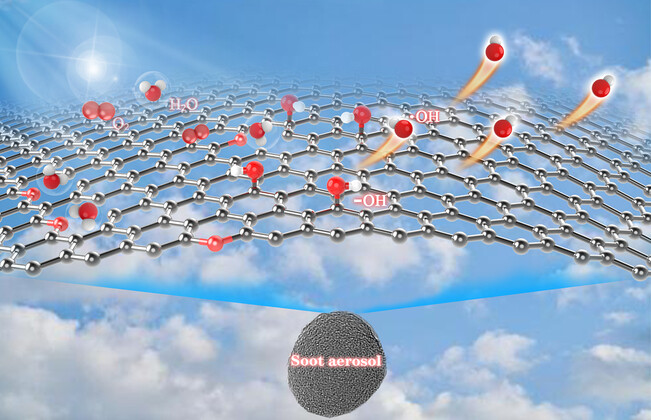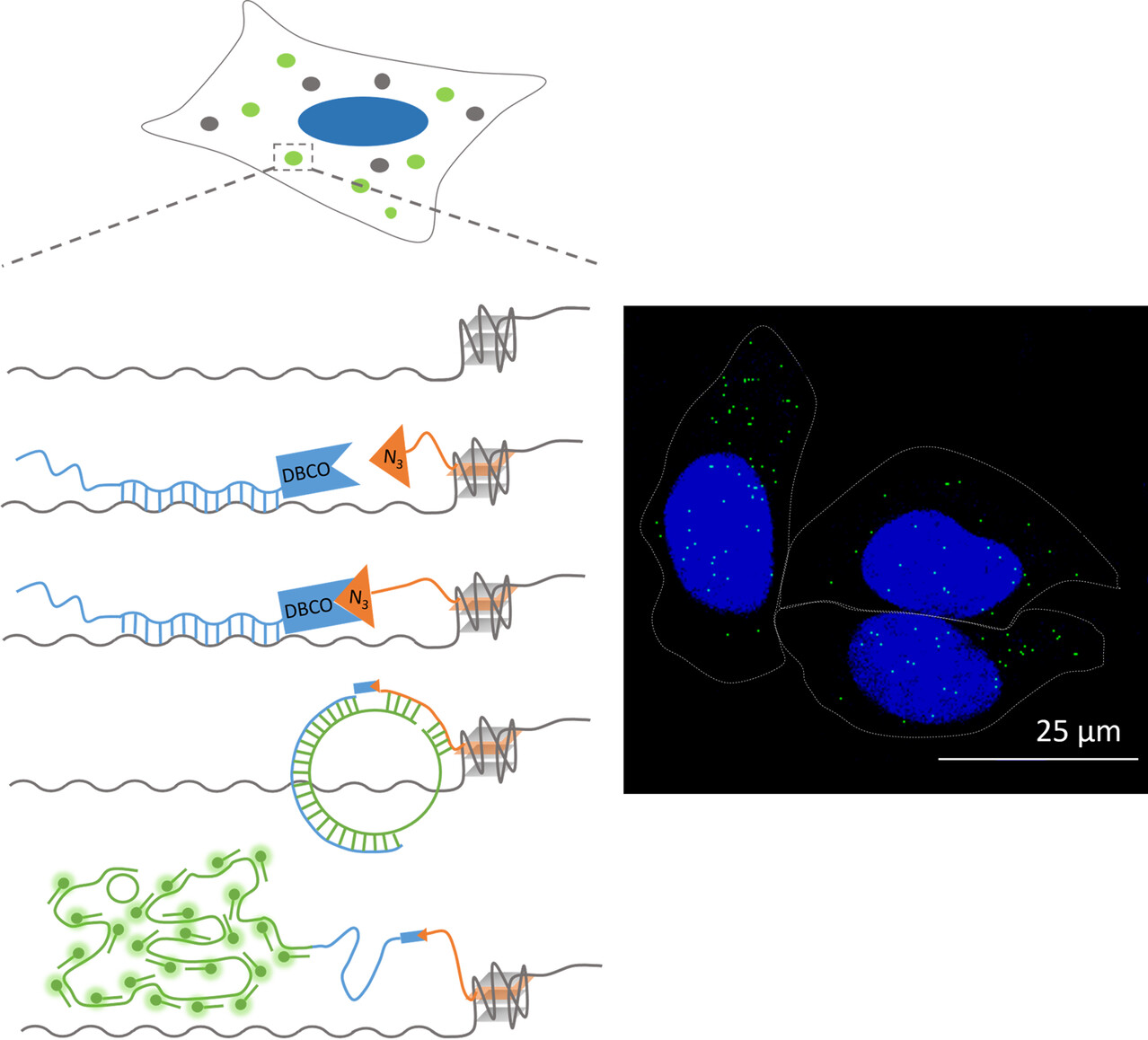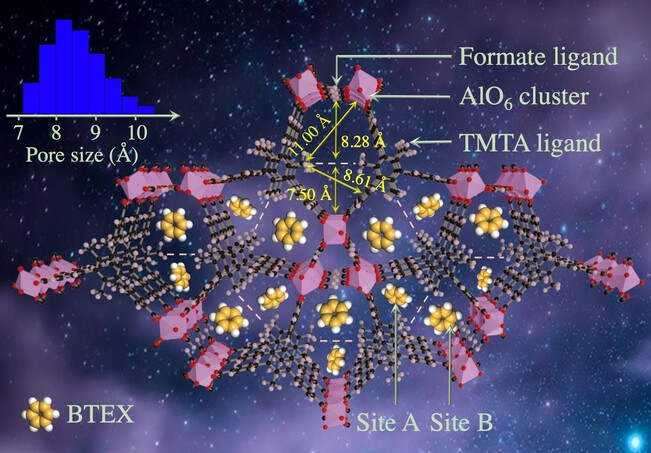Journal list menu
Export Citations
Download PDFs
Articles
Aggregation of Gold Nanoparticles Triggered by Hydrogen Peroxide-Initiated Chemiluminescence for Activated Tumor Theranostics
- First Published: 02 September 2021

Taking advantage of the well-known tetrazole/alkene “photoclick” chemistry, a hydrogen peroxide (H2O2)-initiated chemiluminescence-triggered nanoparticle (NP) aggregation strategy was herein reported to activate the photoacoustic imaging and photothermal therapeutic functions of gold NPs for specific visualization and efficient treatment of tumors in vivo. This approach could provide a valuable tool for achieving precise cancer treatment.
Copper-Catalyzed and Proton-Directed Selective Hydroxymethylation of Alkynes with CO2
- First Published: 11 November 2020
Unraveling Charge-Separation Mechanisms in Photocatalyst Particles by Spatially Resolved Surface Photovoltage Techniques
- First Published: 31 January 2022
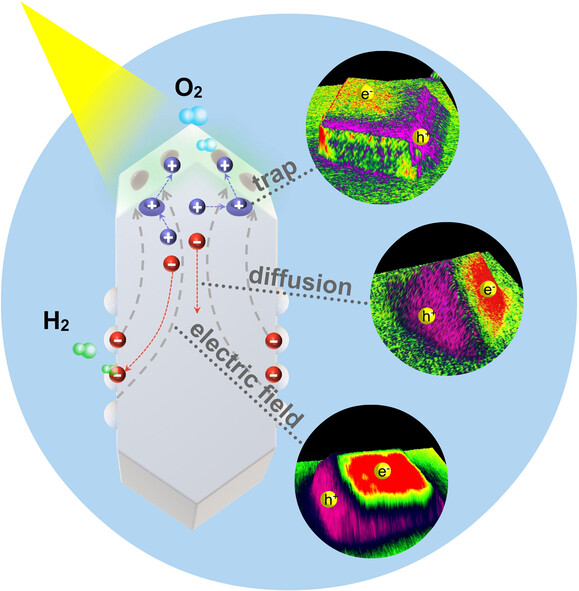
Charge separation is key to efficient photocatalytic solar energy conversion. The distribution of surface charge on photocatalysts can be identified and the driving forces of charge separation quantitatively determined at the nanoscale by the spatially resolved surface photovoltage technique. The identification of photocatalytic charge separation mechanisms will enable the rational design of efficient photocatalytic systems.
Generation and Release of OH Radicals from the Reaction of H2O with O2 over Soot
- First Published: 11 March 2022
Total Synthesis of Starfish Cyclic Steroid Glycosides
- First Published: 05 April 2022
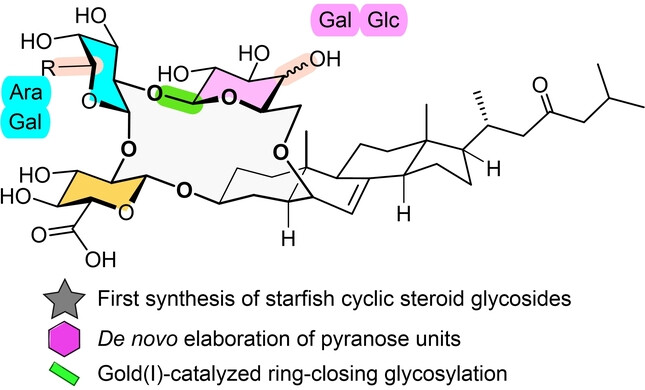
Enabled by de novo construction of the ether-linked hexopyranosyl units, the use of olefinic pyranoses as sugar precursors, and a gold(I)-catalyzed ring-closing glycosylation, the major starfish cyclic steroid glycosides, namely luzonicoside A and D and sepositoside A, have been synthesized for the first time.
Design and Synthesis of a Zeolitic Organic Framework
- First Published: 28 March 2022
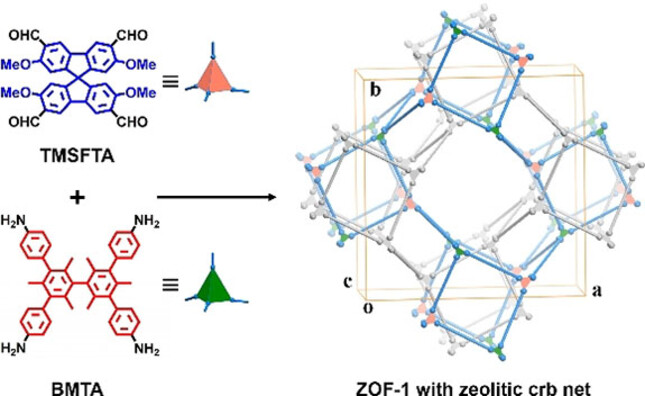
The first case of zeolite-like crystalline porous organic materials, ZOF-1 with high chemical stability, large pore size (up to 16 Å), and excellent specific surface area (≈2785 m2 g−1) is reported. It is superior to its analogues with the same network, including traditional aluminosilicate zeolites and zeolitic imidazole frameworks.
Strong and Reversible Covalent Double Network Hydrogel Based on Force-Coupled Enzymatic Reactions
- First Published: 14 April 2022
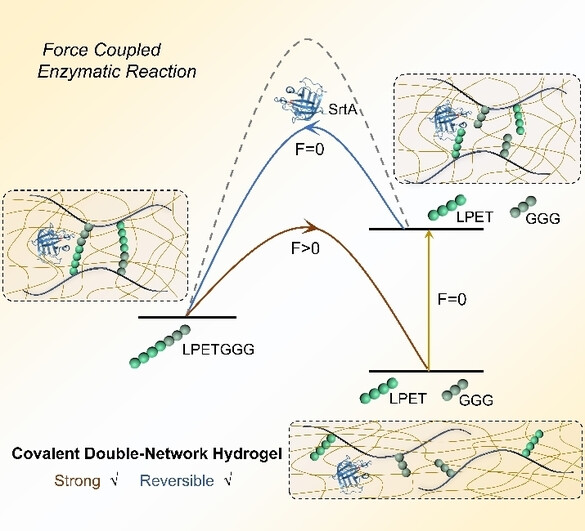
A force-coupled enzymatic reaction was used to tune a strong covalent peptide linkage to create a reversible bond and engineer double network (DN) hydrogels that combine high mechanical strength and reversible mechanical recovery. The peptide ligase, sortase A (SrtA), can promote the proteolysis of peptides under force and re-ligation of peptides without force, allowing the sacrificial network in DN hydrogels to be ruptured and rebuilt reversibly.
Enhanced Blue Afterglow through Molecular Fusion for Bio-applications
- First Published: 30 March 2022
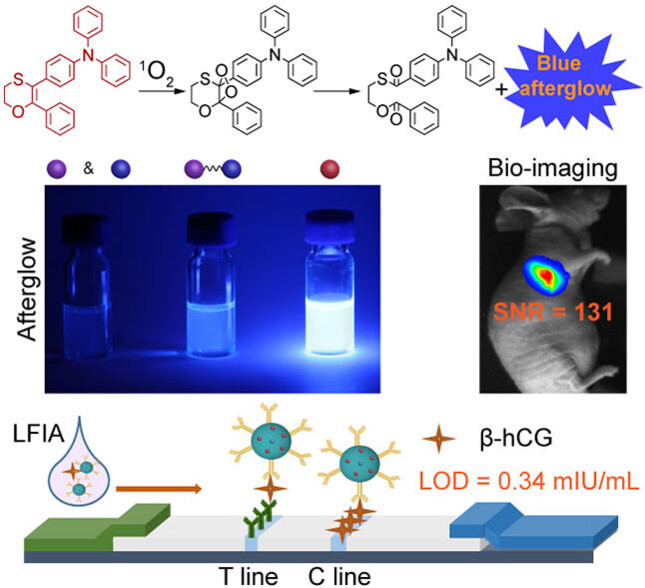
We developed a molecular fusion strategy to achieve a high-efficiency photochemical afterglow system. The afterglow quantum yield was up to 2.59 %, which was significantly higher than that achieved with the physical mixing strategy and the covalent coupling strategy. This afterglow system was further used for high SNR bio-imaging and for the background-free high-sensitivity lateral flow immunoassay detection of β-hCG.
Photocatalytic Chemical Crosslinking for Profiling RNA–Protein Interactions in Living Cells
- First Published: 22 April 2022

The dynamic interactions between RNA and proteins play crucial roles in regulating diverse cellular processes. Proteome-wide characterization of these interactions in their native cellular context remains desirable but challenging. A photocatalytic crosslinking (PhotoCAX) strategy for studying the composition and dynamics of protein–RNA interactions via mass spectrometry (PhotoCAX-MS) as well as RNA sequencing (PhotoCAX-seq) is reported.
Rhodium(I) Carbene-Promoted Enantioselective C−H Functionalization of Simple Unprotected Indoles, Pyrroles and Heteroanalogues: New Mechanistic Insights
- First Published: 17 June 2022
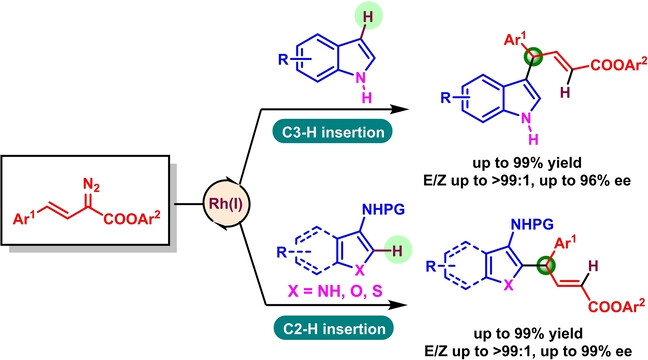
A highly enantioselective C(sp2)−H functionalization of simple unprotected indoles, pyrroles, and their common analogues such as furans, thiophenes, and benzofurans by arylvinylcarbene insertion to access unique heteroarene-containing chiral diarylmethine derivatives has been developed for the first time. Mechanistic and DFT calculation studies revealed that the reductive elimination is the rate-determining step.
The Bifunctional Silyl Reagent Me2(CH2Cl)SiCF3 Enables Highly Enantioselective Ketone Trifluoromethylation and Related Tandem Processes
- First Published: 26 July 2022

A novel bifunctional trifluoromethylsilyl reagent (BTR), Me2(CH2Cl)SiCF3 is prepared, which enables ketone trifluoromethylations with excellent enantioselectivity and broad scope. Notably, by taking advantage of the chloromethyl group, a tandem synthesis of chiral trifluoromethylated oxasilacyclopentanes and α-CF3 tertiary alcohols with vicinal tertiary or quaternary stereocenters was developed.
Single-Cell Visualization of Monogenic RNA G-quadruplex and Occupied G-quadruplex Ratio through a Module-Assembled Multifunctional Probes Assay (MAMPA)
- First Published: 13 November 2021
A Carbonic Anhydrase IX (CAIX)-Anchored Rhenium(I) Photosensitizer Evokes Pyroptosis for Enhanced Anti-Tumor Immunity
- First Published: 29 November 2021
A Novel Aluminum-Based Metal-Organic Framework with Uniform Micropores for Trace BTEX Adsorption
- First Published: 25 January 2023
Open-Cage Fullerene as a Selective Molecular Trap for LiF/[BeF]+
- First Published: 31 January 2023
![Open-Cage Fullerene as a Selective Molecular Trap for LiF/[BeF]+](/cms/asset/5ff66c5d-eeec-4404-b5fd-486ac240e11d/anie202300151-toc-0001-m.jpg)
An open-cage fullerene derivative (trap) was prepared with a hydroxy group (bait/hook) pointing towards the center of the cavity and a diphenyl pocket above the 21-membered orifice. The hydroxy group could coordinate lithium and beryllium cations, which led to the encapsulation of LiF and [BeF]+ in the fullerene. The hydroxy group was also shown to form hydrogen bonds with molecules such as water, methanol, and ethanol in the diphenyl pocket.
From Dinitrogen to N-Containing Organic Compounds: Using Li2CN2 as a Synthon
- First Published: 10 March 2023

A strategy for the conversion of inert N2 into various nitrogen-containing organic compounds is presented. The activated N-containing species Li2CN2 is successfully prepared in high yields from N2 gas, C and LiH. Li2CN2 can be transformed into a range of N-containing organic compounds, including cyanamides, carbodiimides, N-aryl cyanamides and 1,2,4-triazole derivatives. 15N-labeled products, including oxazolidine derivatives, have also been prepared from 15N2 gas.
Atomic-Level Regulation of Cobalt Single-Atom Nanozymes: Engineering High-Efficiency Catalase Mimics
- First Published: 05 March 2023
A High-Performance n-Type Thermoelectric Polymer from C−H/C−H Oxidative Direct Arylation Polycondensation
- First Published: 14 March 2023
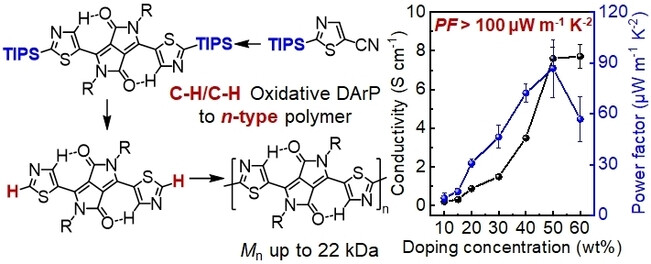
C−H/C−H oxidative direct arylation polycondensation is firstly adopted to synthesize a high-performance n-type conjugated polymer using a newly developed monomer, i.e., 3,6-di(thiazol-5-yl)-diketopyrrolopyrrole (Tz-5-DPP). After n-doping, the polymer exhibited electric conductivity values up to 8 S cm−1 and power factors up to 106 μW m−1 K−2.
Manipulating Local Lattice Distortion for Spectrally Stable and Efficient Mixed-halide Blue Perovskite LEDs
- First Published: 03 March 2023
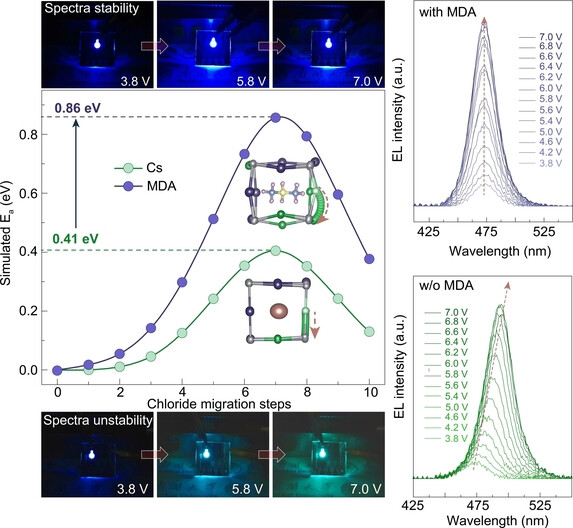
A new local lattice distortion (LLD) manipulation strategy was demonstrated to suppress the halide migration in mixed-halide perovskite. DFT simulation and experimental data confirm that the LLD manipulation effectively suppresses the halide migration in perovskites. Mixed-halide blue PeLED with champion EQE of 14.2 % at 475 nm and impressive T50 of 72 min has been achieved, representing the state-of-the-art pure-blue PeLEDs.
A Glycosidic-Bond-Based Mass-Spectrometry-Cleavable Cross-linker Enables In Vivo Cross-linking for Protein Complex Analysis
- First Published: 30 March 2023
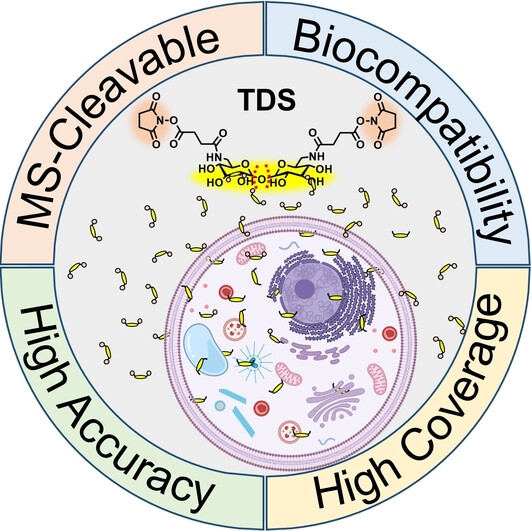
A glycosidic-bond-based mass-spectrometry-cleavable cross-linker has been developed that enables in vivo cross-linking for analyzing protein complexes. The MS-cleavable glycosidic bond of trehalose disuccinimidyl ester (TDS) improves the accuracy of identification while increasing the search throughput. In addition, in vivo cross-linking is enabled in the living cell microenvironment because of the high biocompatibility, bioorthogonality, and amphipathicity of TDS.






